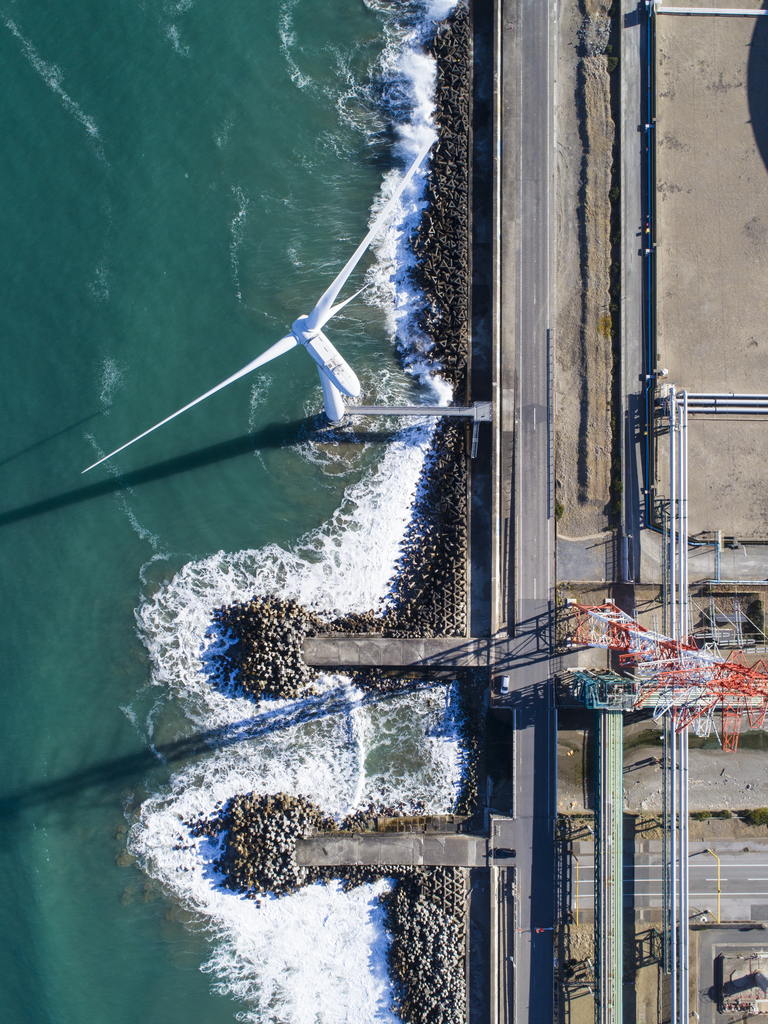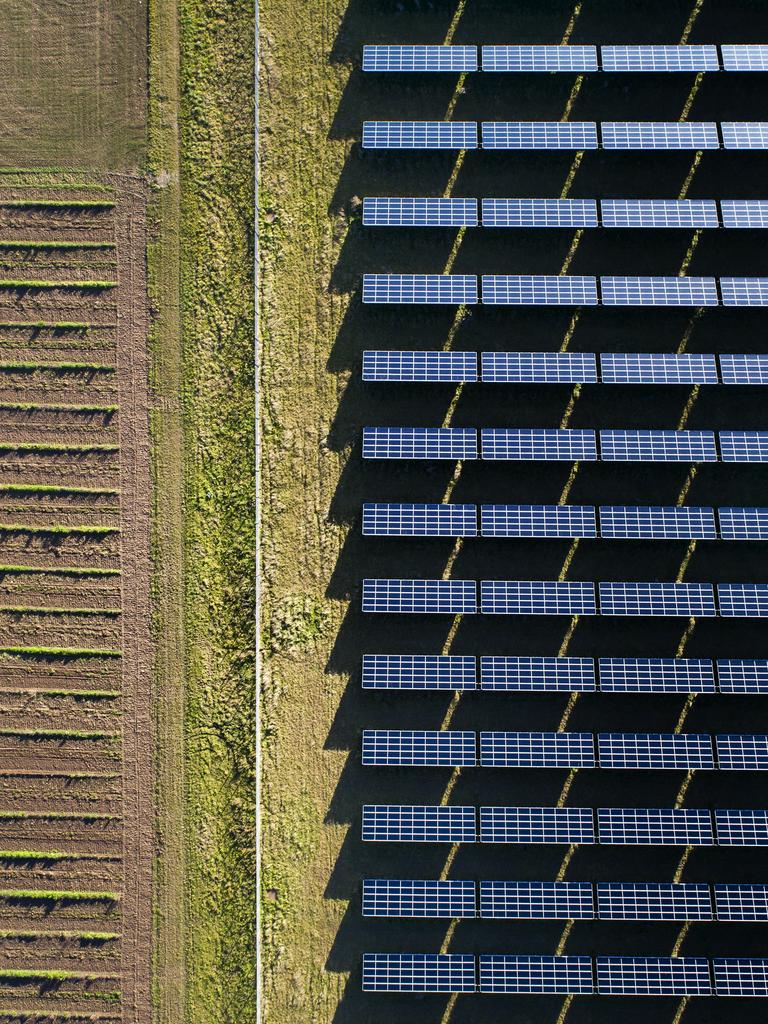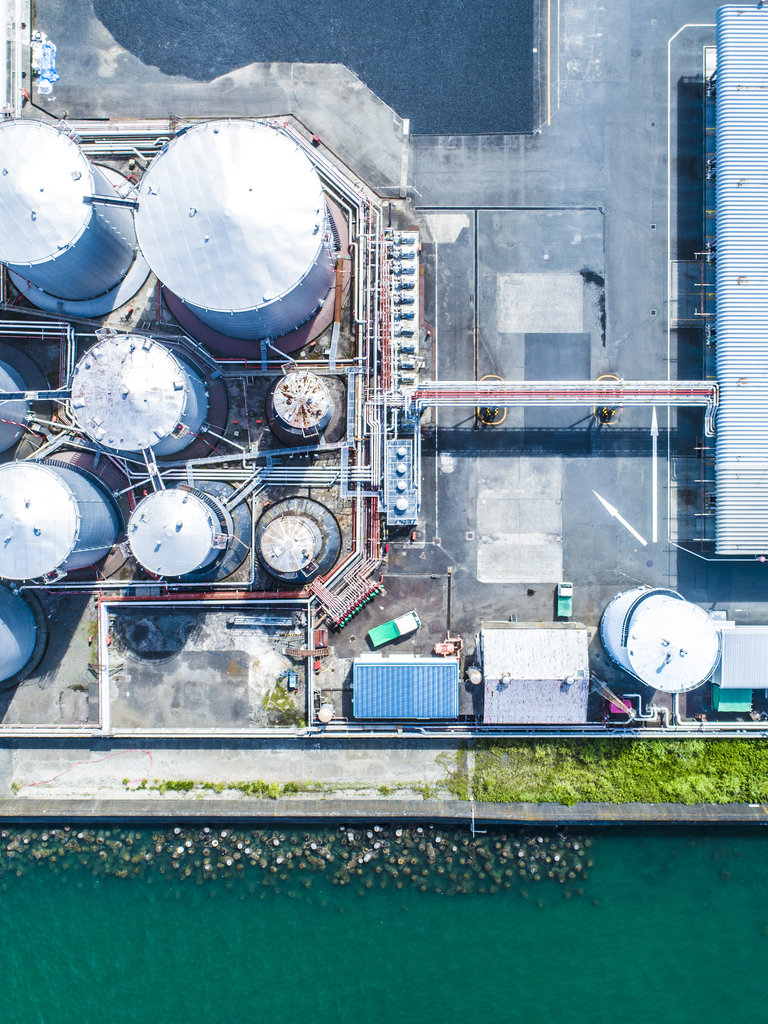
TU Delft position on Climate Action
The Climate Action mission of TU Delft
The anthropogenic emissions of greenhouse gases are changing our living environment through their impact on the global climate system. TU Delft will harness its innovative powers to support the world-wide transition to non-fossil energy, and adaptation of the living environment to the consequences of global warming.

Preface
Climate change takes place worldwide, although not everywhere in the same way. Historically, industrialized countries – mostly in the global North - have contributed most to the emission of greenhouse gases, but Asian economies are now also making a major contribution. As the Paris Agreement shows, the approach to tackle climate change follows from an internationally shared responsibility – leading to Climate Action as one of the Sustainable Development Goals of the United Nations.
The Netherlands can play an important role with the development of regional climate knowledge, adaptation and mitigation techniques, and the sharing of this knowledge through open science and innovation, international cooperation, and education. TU Delft sees this as an important pillar of its future strategy.
The political and public debates on the Dutch climate plans have started. This is a good thing, because everyone in society will experience the consequences of climate policy. Climate change is a physical phenomenon, but its causes are deeply intertwined with global socio-economic changes and natural conditions, in the present and in the past. Automatically, this leads to questions about who is responsible and how the benefits and burdens should be divided. The debate about this lies in the heart of politics.
This debate will, however, yield the most when it is based on facts and knowledge and when it accounts for the important societal and ethical issues of responsibility and justice. TU Delft wants to provide a scientific basis for the debate on climate plans. In this document, we will outline the TU Delft position on climate science, and describe avenues for mitigation and adaptation.
On an accompanying website we provide more details and background information.

What does the climate science say?
On the basis of the current state of affairs in climate science, the following can be established:
-
The Earth is warming. There are numerous measurements, from weather stations around the world, from weather balloons, ocean buoys, and, more recently, from satellites, which show this.
-
Emissions of greenhouse gases, mostly due to the use of fossil fuels, have risen sharply during the last decades.
-
The observed increase of the mean global temperature since pre-industrial times has been robustly attributed to the increase of greenhouse gases. Other phenomena, such as variations in solar radiation, or the concentration of dust particles in the atmosphere, have a much smaller effect. Geological and orbital variations are too slow to explain the current rapid temperature increase.
-
The warming is also apparent from other signals than increases in atmospheric and ocean temperatures. Sea level is increasingly rising, glaciers are retreating and the amount of polar ice is quickly decreasing. Regional rainfall patterns are changing, and also weather extremes such as heatwaves are increasing.
-
To reduce global warming, it is necessary to reduce greenhouse gas emissions. In addition to CO2 (carbon dioxide), this includes CH4 (methane), N2O (nitrous oxide), and hydrofluorocarbons.
-
In order to limit the warming to a maximum of 2°C, it is necessary to reduce the worldwide net CO2 emissions to zero in the second half of this century. If we want to limit the emissions to a 1.5°C warming, this must be the case in the middle of this century.
-
In order to make statements about the future, climate models are needed, in combination with scenarios for developments of, among other things, the global economy, population growth, technological development, policies, lifestyle and standard of living.
-
The current climate models, as presented by the IPCC, the United Nations platform for climate scientists from all over the world, are capable of reproducing the globally observed temperature trends and can be used as a basis for climate policy.
-
Complying with the Paris Agreement is a necessary action to protect our societies from adverse consequences of global warming. However, the plans might not be sufficient to limit the warming to 2°C. While it is possible to reduce global warming to safer levels through the Paris Agreement and eventual additional policies, we need to prepare for global adaptation to the effects of climate change as well.
-
The Paris Agreement also implies that negative emissions - the removal of greenhouse gasses from the atmosphere - are necessary. Intense work in this area is needed as the available techniques are still insufficiently developed for large-scale application, and also new techniques need to be developed.
-
If at any time in the future the effects of climate change prove to be extreme, new techniques should be available that, as a safety valve, can temporarily cool the earth. The required techniques for this still need to be developed, and the risks versus benefits thoroughly assessed
We conclude that both climate mitigation (the prevention of climate change by reducing greenhouse gas emissions) and climate adaptation (adapting to ongoing and future in the climate) are very much needed in order to keep our planet viable in the long term. That certainly also applies to The Netherlands.
The transition to a sustainable, low-carbon and resilient society is however very complex, involving technical, social and ethical challenges. This transition calls on a wide range of different actors and policy makers to change current practices.
These changes bring forth questions like what is the best technical solution for a specific context, at a specific time or a specific location? What are cost-effective, practical possibilities and the associated societal and ethical concerns? Who will profit and who will not, and how should we deal with that? How can we make sure the energy transition is fair and inclusive? What policies do we need to make the solutions sustainable?
It requires forward-looking governance and planning, able to deal with structural uncertainties to guide government and public in making informed trade-offs between a wide range of technical, ecological, economic, ethical and social consequences. It is the role of climate science to support and guide this process through informing the society with up-to-date insights into climate change.

Shifting to new challenges
Against this backdrop, the climate science needs to take on a number of renewed and new challenges and research questions:
How strong is the climate sensitivity?
Although climate models are well capable of attributing the observed warming to increased greenhouse gases, there are still variations among different models due to uncertain feedback mechanisms in the climate system; clouds play a large role in this. Estimates for the response of our climate system to a doubling of CO2 range from 1.5 to 4.5°C global warming. Reducing this uncertainty is a key challenge, because the strength of many regional climate changes is proportional to this climate sensitivity.
How does the future climate influence habitability?
Future climate research will focus more on the regional aspects of climate change, based on increasingly accurate measurements and refinement of the spatial scale of the models. It is the impact of global warming on melting ice sheets, regional sea level rise, precipitation patterns, droughts, heat waves and the consequences for flora and fauna, health, agriculture, urban environment and living conditions that will be at the heart of climate science.
Where is the carbon going?
Science based verification of reported emissions of CO2 at least on a regional scale will be essential for evaluating the pledges made by individual countries. Secondly, on a longer decadal timescale it is important to know whether and how the ocean and land sinks of carbon cycle will change. A careful monitoring, modelling and understanding of the carbon cycle is therefore crucial to answer this question.
To which extent can extreme events be attributed to climate change and how will they develop into the future?
Detection and attribution of long-term mean trends in observed records (temperature, sea level rise, melting ice-caps) will continue to be a main task of the scientific community. For the case of extreme weather events, (e.g., extreme precipitation, heat waves, droughts, and floods) attribution is an extremely challenging effort, becoming a new emerging branch of science that analyses whether global warming makes an observed extreme event more likely. Robust attribution and prediction are necessary to further optimize the future climate policy and adaptation measures.

What are the pathways for mitigation?
In The Netherlands, the current emission of CO2 equals approximately 164 Megaton per year, with different contributions by the sectors of energy (30%), industry (22%), road transport (18%), built environment (15%), and agriculture (5%. The remaining 10 % is of miscellaneous origin. The energy sector produces electricity for use in other sectors such as the built environment. Including the non-CO2 greenhouse gases, the total emission amounts to 193 Megaton CO2-equivalents per year. Note that these emission inventories are based on international agreements, and exclude the contribution of air and sea transport as well as biomass energy production.
The numbers above imply that every sector must take effective measures to reduce greenhouse gas emissions, ranging from short term actions for rapid emission reduction, such as efficiency measures, to the long-term development of non-fossil-based energy systems. Such systems will comprise several energy production, conversion, distribution, and storage technologies, deployed in interconnected infrastructures and markets. Therefore, new energy market policies are needed: how should markets be designed and what regulation is needed for a zero-carbon energy system to work reliably and effectively? Ultimately, we have to move to a circular economy in which we close the water, energy and nutrient cycles, through the recovery and reuse of CO2.
What new technologies need to be developed and how do we transform our current society into a circular society? At TU Delft we strongly believe that we need to develop a portfolio of innovative energy technologies, production systems and materials for the short as well as for the very long term. Given the long-term uncertainty of technological development, it is a no-regret strategy to develop a portfolio of solutions, with radically new technologies and improvements of the methods that are already available to us
Salient topics and research areas in our portfolio, therefore, are:
- Wind energy: a substantive share of future electricity demand in the Netherlands can be met by off-shore wind farms. The developments are going at rapid pace, not only technological, but also economical: the first off-shore park has already been realized without a subsidy. Further innovation is needed in materials, turbine design, wind park design and operation, and system integration into the grid, but also the effects of wind farms on the local microclimate.
- Solar energy: the developments in photovoltaic technology have led to increasingly efficient and financially attractive solar panels, currently at grid parity cost in large parts of Europe. In addition to the known panels that are applied to roofs, we develop new materials, panels and systems that can be integrated into roofs, facades or urban surfaces, offshore and onshore water surfaces.
- Biomass: organic waste, agricultural residues and short-cycle biomass that cannot be used for food or high-value products can be utilized in the energy system. We develop high-quality biofuels and biochemicals for the industry and mobility sector.
- Nuclear energy: traditional uranium-based nuclear fission power stations encounter societal and economic opposition. For the short term, nuclear energy may not be a solution for the Netherlands, but we develop nuclear technology, such as thorium reactors, to possibly provide large-scale fossil-free energy some decades away, as part of a European or global portfolio.
- Environmental and geo-energy: the shallow subsurface can be used - as well as surface water - as a low-temperature source, the medium-deep subsurface as a layer for heat and cold storage, and the deep subsurface as a high-temperature source (geothermal energy) that can eventually replace residual heat from fossil processes in heat networks.
- Network optimization: the multitude of new energy sources requires a flexible distribution network and accompanying markets, to match supply to demand at any time, at any place. We develop the required innovations in IT, digitalization, market design and regulation.
- Reduction of energy demand: energy-neutral new construction, energy renovations and transformations in the built environment, electric mobility, more efficient equipment, smart operation and maintenance, and more efficient means of transport, are solutions towards reducing primary energy demand. In the existing built environment, a substantial amount of the current energy demand can be reduced.
- Residual heat: industrial processes, power stations, data centres, and greenhouses produce residual heat that can be used in the built environment, in addition to the recovery of residential residual heat. Even though residual heat that is available from plants operated with fossil fuel will decrease in the long term, this is still a very important climate change mitigation technology towards 2050.
- Resource efficiency. Resource extraction and processing are responsible for half the world’s climate impact. With a growth rate of more than 2% per year, the increasing material weight of the world’s economies is putting stress on climate and natural life-support systems. Pursuing a circular economy in which products and resources are looped back into the economy through reuse, repair, remanufacturing and recycling will contribute to a reduction of primary energy demand.
Nature-based renewable energy sources are by definition intermittent; supply and demand will not always match. To overcome this problem large scale energy storage capacity is needed. Currently the electric grid is used for this – or batteries on a smaller scale - but this is not optimal for global mitigation policies. New storage technologies and methodologies are needed. The Paris Agreement implies negative emissions: the extraction, long-term sequestration and re-use of greenhouse gases from the atmosphere, in a circular fashion. Transportation of energy on a global scale, currently takes place in the form of energy dense hydrocarbons (coal, oil, gas). In moving away from fossil sources, we will also need new molecule-based energy carriers to transport our energy from the location of production (solar farms, wind farms) to the demand locations.
Key building blocks of the future energy and industry system are hydrogen and synthetic fuels, such as methanol, methane, ethylene, ethanol or ammonia. They can be used directly as fuel in fuel cells or combustion engines, or as an intermediate to larger synthetic hydrocarbons, heavier fuels and other chemical products. Many Carbon Capture Storage and/or Usage technologies required for this are still in their initial stage of development, while others are closer to implementation, for instance:
- large-scale production of hydrogen through electrolysis still is a major challenge and requires substantial upscaling and optimization of existing technologies.
- bulk transportation of hydrogen across the globe, e.g. by means of (electrochemical or thermochemical) conversion to ammonia or hydrocarbons.
- production of synthetic fuels and chemical building blocks, from CO2 and water, requires large-scale capture of and (electrochemical) reduction of CO2, initially sourced from concentrated sources, but ultimately from direct air capture, to close the anthropogenic carbon cycle.
- industrial membranes to directly capture CO2 from the atmosphere.
- large-scale subsurface buffering of hydrogen for energy supply.
- nature-based techniques, like afforestation for storing CO2 and sustainable applications for wood in for instance construction works;
- long-term storage of CO2 in the deep subsurface.
- bio-char: the separation of carbon from biomass to prevent from CO2 being formed, such that the carbon can be used for new applications.
Carbon emissions from the mobility sector can be mitigated through, on the one hand, electrification of transport (provided that the electricity is fossil-free), and on the other hand by providing alternative fossil-free fuels: hydrogen (and hydrogen carriers) and synthetic fuels. It requires new knowledge and experimental proof on alternative fuels in transport systems, and the effects of the use of these fuels on both energy storage and energy conversion on board of such transport systems. For heavy transport systems, such as ships and aircraft, research topics are:
- improve the efficiency of new and existing ships, trucks and aircraft.
- fleet renewal: every generation of aircraft or instance is on average 15-20% better than its predecessor, but market incentives are needed to make this happen.
- development of renewable diesel and kerosene-like fuels which can also be used in existing engines.
- address the climate impact in determining transportation trajectories, operational and routing procedures.
- reduce the demand for mobility.
What are the challenges for climate adaptation?
In large parts of the world, but even more so in The Netherlands, climate adaptation mainly focuses on sea level rise, precipitation extremes versus droughts, storms, hydrological changes and, of course, the increasing temperature.
Without sufficient mitigation measures, humanity and nature will increasingly be affected by climate change, so adaptation to these changes will be a dire need until an acceptable climatological stability is achieved again. Many areas in the world are already at great risk of flooding: floods from the coast, the rivers and due to heavy rainfall. The risks will increase in the future and they will not be evenly distributed, not only due to climate change but also strongly due to economic and population growth. It is therefore essential to implement measures to manage these risks in a fair manner.
A future-oriented plan is necessary and it should coherently account for coastal protection, river discharge, water management, salt intrusion, urbanization and governance are considered in their entirety. This involves a portfolio of measures to be developed and implemented: new resilient infrastructures, nature-based adaptation techniques, and social measures for increased awareness and empowerment. Examples are:
- In a warming world, the built environment must be better attuned to an increasing cooling demand, for instance by including the urban water system for cooling, energy generation and storage. The active and passive removal of urban heat can contribute to a sustainable energy system.
- With enhancing extremes in both precipitation and drought, a complete re-design is needed to increase the resilience of urban, rural and ecological water systems, serving the communities, agriculture, ecology and the urban fabric.
- The Netherlands will face a new challenge for the coastal defence to accommodate a possible sea-level rise of one meter this century, against a backdrop of a much larger sea level rise of several meters that might unfold in the 22nd century: society transformative perspectives towards retreat, advance or embrace strategies might be needed.
And what about geo-engineering?
Adaptation to a world that is too warm can require techniques for managing the incoming solar radiation to cool the earth, for instance by increasing the reflective properties of the Earth through injection of dust particles in the stratosphere, or by changing cloud fields over the oceans. Such techniques are not the solution to global warming, but they could help alleviate some of the severe consequences, if they were to happen. Geoengineering might be needed to act as a final safety valve in the climate system, or a last resort as it is often referred to in climate policy.
The development of these techniques will take many years – even decades – as will the political and ethical debate about their desirability and the conditions under which they could be applied
Coda: The ambition of TU Delft
Climate Action is one of the Sustainable Development Goals of the United Nations. It expresses the hard felt need for new measures to cope with climate change. The goal – a climate resilient world - cannot be achieved without innovative technologies, for mitigation as well as for adaptation. It cannot be achieved without a better understanding of global and regional climate change. And it cannot be achieved without deeper insights into the ethical, social and cultural embedding of policies and measures.
TU Delft sets out to build upon its intellectual and innovative power for safeguarding the world population against the risks of climate change, by developing technologies and methods as described above – in close collaboration with those companies and organizations that need to implement such measures in practice. The problem is complex and urgent – but we have no other choice than to be optimistic and use all of our capacity to face the challenge, through our education programs and our research.
TU Delft takes its social responsibility.
